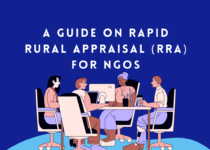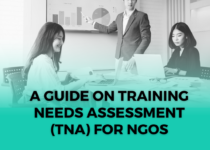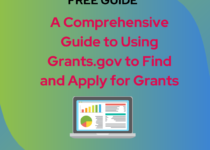A Comprehensive Guide on Crafting a Robust Logical Framework for NGOs: A Free Step by Step Guide
Introduction: A Comprehensive Guide on Crafting a Robust Logical Framework for NGOs, In the dynamic world of non-governmental organizations (NGOs), the ability to plan, implement, and evaluate projects effectively is paramount. A Logical Framework (LogFrame), also known as a logframe matrix or project matrix, emerges as a key strategic tool in this pursuit. This section offers a foundational understanding of logical frameworks, elucidating their significance as indispensable instruments for NGOs striving to navigate the complexities of project management.
A logical framework is not merely a bureaucratic requirement but rather a comprehensive planning and management tool designed to enhance the efficiency and effectiveness of projects. At its core, a logical framework provides a structured and systematic approach to project design, enabling organizations to articulate their mission, set clear objectives, and delineate the strategic pathways toward impactful outcomes.
This overview delves into the fundamental concepts that constitute a logical framework, unraveling the intricacies of its components such as goal statements, objectives, outputs, activities, indicators, and assumptions. As NGOs grapple with multifaceted challenges and diverse stakeholder expectations, a well-crafted logical framework serves as a compass, guiding them through the planning process and fostering a holistic understanding of their initiatives.
By the end of this guide, readers will gain a profound appreciation for the role of logical frameworks in empowering NGOs to articulate, implement, and measure the success of their projects. The subsequent sections will delve into specific aspects, equipping NGOs with the knowledge and tools necessary to construct robust logical frameworks tailored to their unique missions and operational contexts.
In this article unlock the mystery of Logical Framework, form a technical base that will help you design any log frame from the scratch for any proposal you are writing for your mission work or grants approval.
The article not only reads well, but you will experience a smooth and pain free learning experience from the very basic to advance concepts.
Importance crafting a Logical Framework in NGO Proposals
The importance of logical frameworks for NGOs lies in their ability to provide strategic clarity, enhance project management efficiency, and facilitate effective communication. By offering a structured approach to project design and evaluation, logical frameworks enable NGOs to align activities with their mission, articulate measurable objectives, and demonstrate accountability to stakeholders. These frameworks serve as indispensable tools for planning, implementing, and assessing projects, fostering transparency and fostering a results-oriented culture within the organization.
Understanding the NGO Context for Engineering a Logical Frame Work
Just before you dive into shaping your very first logical framework, you need to understand the context of your own organization, the context in which you want to work and the challenges you might face in your charity work.
- Mission and Goals
When crafting a logical framework, start with the heart of your organization: its mission and goals. Your mission is like a guiding star, representing the core purpose of why your charity exists. Think of it as your organization’s North Star, always pointing towards the impact you aim to make.
Goals, on the other hand, are the big things you want to achieve to fulfill that mission. They’re like milestones on your journey, showing you’re moving in the right direction. In the logical framework, being crystal clear about your mission and goals is like setting the destination on your GPS—it keeps you focused and helps you choose the best route (activities) to get there.
- Stakeholder Analysis
In the world of logical frameworks, understanding your stakeholders is akin to knowing your team players in a game. Stakeholders are the people and groups who can influence or are influenced by your charity’s work—they’re like teammates, opponents, and referees all rolled into one.
Conducting a stakeholder analysis involves identifying and understanding these key players. Who supports your cause enthusiastically (cheerleaders)? Who might have concerns or reservations (opponents)? Who holds the purse strings or provides essential resources (financial backers)? Recognizing and mapping out these stakeholders is like creating a playbook for your project.
In your logical framework, stakeholder analysis helps you anticipate needs, address concerns, and build partnerships. It’s not just about winning the game but making sure everyone involved is on the same team, working towards a common goal—your mission. So, before you kick off your logical framework, take the time to identify and understand your stakeholders. It’s the strategic move that ensures your projects are not just well-planned but well-supported.
- Identifying Key Challenges
Identifying Key challenges is akin to scouting the terrain before a big adventure. Challenges are the bumps in the road, the hurdles to overcome—they’re the dragons you need to be ready to face.
Identifying key challenges involves taking a close look at the obstacles that might stand in the way of your mission and goals. Whether it’s limited resources, external pressures, or unforeseen obstacles, acknowledging these challenges is your strategic armor. It’s like having a map that not only highlights the exciting destinations but also marks potential roadblocks.
In your logical framework, addressing challenges head-on ensures your plans are resilient and adaptable. It’s not about avoiding difficulties but preparing to navigate them effectively. So, before you set out on your logical framework quest, make a list of those dragons and devise your plan to conquer them. It’s the proactive step that turns challenges into opportunities for success.
Components of a Logical Framework
Conceptual clarity comes first before anyone creates something which is technical in nature. Perhaps, logical framework also has an order of flow and components. To make things easy for you I have explained each component of Logical Framework in a very uncomplicated manner so that you can have that technical base on which you can craft your own logical framework
- Goal Statement
In context to Logical Framework the goal statement is your project’s North Star—the ultimate destination you’re striving to reach. Think of it as the beacon that guides all your efforts. The goal is the big-picture, overarching impact you aim to make, the positive change you want to see in the world.
Crafting a clear and concise goal statement is like setting the compass for your entire project. It provides direction, purpose, and a shared vision for everyone involved. In your logical framework, the goal statement is not just a line; it’s the epicenter around which all other elements orbit—objectives, activities, outputs, and more.
So, when defining your goal statement, aim for clarity and inspiration. It’s the foundation on which your logical framework stands, ensuring that every action you take contributes meaningfully to the larger purpose of your organization.
- Objectives
Objectives are the strategic milestones that bridge your overarching goal to actionable steps. These are like the stepping stones that lead you toward your ultimate destination—the tangible and measurable outcomes you want to achieve.
Objectives are more specific than the goal and provide a roadmap for your journey. They answer the question, “What do we need to accomplish to reach our goal?” Each objective is like a mini-goal, contributing to the larger picture. While crafting objectives for your logical framework, make them SMART: Specific, Measurable, Achievable, Relevant, and Time-bound.
In essence, objectives transform your lofty aspirations into manageable tasks. They guide your efforts, helping you stay on track and ensuring that every action is purposeful, aligned with your mission, and contributing to the greater impact you seek to make.
- Outputs
In the logical framework landscape, outputs are the tangible and immediate results of your activities—the things you produce or deliver as a direct outcome of your efforts. Think of them as the building blocks that, when combined, construct the path towards achieving your objectives.
Unlike goals and objectives that focus on broader outcomes, outputs are more concrete and measurable. They represent the products, services, or events that emerge directly from your activities. Whether it’s a workshop conducted, a report generated, or a community outreach event organized, outputs are the visible and quantifiable elements that showcase progress.
When outlining outputs in your logical framework, precision is key. Clearly defining what you aim to produce ensures that your activities are purposeful and contribute meaningfully to achieving your objectives. Outputs, therefore, serve as the checkpoints on your journey, allowing you to track progress and celebrate the tangible results of your organization’s work.
- Activities
Activities are the hands-on, practical steps you take to bring your objectives to life. They are the “how” behind your plan, outlining the specific tasks and processes that, when executed, lead to the creation of outputs and, ultimately, the achievement of your goals.
Activities are the nuts and bolts of your project, detailing the actions, events, or interventions that your team will undertake. Whether it’s conducting training sessions, implementing community projects, or developing resources, activities are the engine that drives progress.
When articulating activities in your logical framework, clarity is paramount. Each activity should align directly with your objectives and contribute to the production of outputs. This ensures that your team stays focused on the tasks at hand, making efficient strides toward realizing the broader impact outlined in your goal and objectives. Activities, therefore, are the actionable elements that transform your strategic plan into tangible results.
- Indicators
In the logical framework context, indicators are the compass needles guiding you in assessing progress and success. These are measurable signs or markers that help you track changes and outcomes related to your objectives and goals. Indicators provide a way to gauge whether your activities are moving you closer to your intended impact.
Indicators can be quantitative or qualitative, offering a means to objectively measure the extent of change or achievement. Whether it’s the number of beneficiaries reached, improvements in community well-being, or shifts in knowledge levels, indicators offer concrete evidence of your project’s effectiveness.
When defining indicators in your logical framework, choose them carefully to ensure they truly reflect the changes you seek. Well-crafted indicators serve as navigational tools, helping you stay on course, make informed decisions, and demonstrate the real-world impact of your organization’s efforts. They transform your goals and objectives into measurable outcomes, providing a roadmap for success.
- Assumptions
Understand that assumptions are the underlying beliefs or conditions that you consider as prerequisites for the success of your project. They are the “what ifs” and contextual factors that, if proven false or unstable, could impact the achievement of your objectives and overall goal.
Assumptions are the silent influencers that shape the environment in which your project operates. These can include factors such as political stability, community support, or the availability of resources. Identifying assumptions is crucial because it helps you acknowledge the uncertainties that may affect your project’s outcomes.
When outlining assumptions in your logical framework, be explicit and realistic. Recognizing these factors is a proactive step, allowing you to plan for contingencies and adjust your approach if necessary. Assumptions, therefore, serve as a form of risk management, ensuring that your strategic plan is resilient in the face of potential challenges and uncertainties.
Steps to Develop a Logical Framework
Creating a robust logical framework involves a structured process that aligns your organization’s mission with practical, measurable outcomes. Follow these essential steps to develop a comprehensive and effective logical framework:
- Project Identification and Definition:
- Clearly define the purpose and scope of your project.
- Identify key stakeholders and their roles.
- Articulate the problem or need your project aims to address.
- Stakeholder Consultation:
- Engage with stakeholders to gather diverse perspectives.
- Conduct a thorough stakeholder analysis to understand interests and expectations.
- Incorporate stakeholder feedback into your project design.
- Defining the Problem:
- Develop a precise problem statement that outlines the issues to be addressed.
- Analyze the root causes and contributing factors.
- Ensure the problem aligns with your organization’s mission and goals.
- Establishing Goals and Objectives:
- Craft a clear and inspiring goal statement representing your project’s ultimate impact.
- Define SMART objectives that serve as measurable milestones toward your goal.
- Ensure goals and objectives align with the identified problem and stakeholder needs.
- Selecting Indicators and Metrics:
- Identify quantitative and qualitative indicators to measure progress and success.
- Ensure indicators are specific, measurable, and aligned with objectives.
- Establish baseline data for comparison and evaluation.
- Planning Activities:
- Outline the practical steps and interventions necessary to achieve objectives.
- Align activities with identified outputs and ensure they contribute to the overall goal.
- Develop a timeline and allocate resources for each activity.
- Identifying Assumptions and Risks:
- Clearly state assumptions regarding external factors and conditions.
- Assess potential risks that could impact the success of your project.
- Develop contingency plans to mitigate identified risks.
By systematically navigating through these steps, you can construct a logical framework that not only guides your project implementation but also enhances your organization’s ability to achieve meaningful and sustainable outcomes.
Sample Logical Framework Matrix
To make things more reasonably easy, below I have provided a simplified example of a Logical Framework Matrix.
Please note that the content is illustrative, and in a real-world scenario, you would tailor this matrix to fit the specifics of your project.
Logical Framework Matrix: [Reversing Malnutrition in ABC Community]
| Objectives | Indicators | Means of Verification | Assumptions |
| Goal: Reduce malnutrition in [Target Community] by 20% within the next 2 years. | – Percentage decrease in malnutrition rates. | – Pre and post-surveys conducted by independent assessors. – Health records from local clinics. | – Assumption: Availability of accurate baseline malnutrition data. |
| Objective: Improve maternal nutrition knowledge in [Target Community]. | – Number of participants attending nutrition workshops. – Percentage increase in pre and post-knowledge assessment scores. | – Attendance sheets from workshops. – Pre and post-assessment tests. | – Assumption: Willingness of community members to participate in educational programs. |
| Objective: Enhance access to nutritious food in [Target Community]. | – Number of community gardens established. – Percentage increase in families reporting improved access to nutritious food. | – Project reports on garden establishment. – Household surveys on food access. | – Assumption: Availability of suitable land for community gardens. |
| Objective: Strengthen local healthcare infrastructure to support malnutrition prevention. | – Number of health facilities providing nutritional counseling. – Percentage increase in trained healthcare professionals. | – Reports from health facilities. – Training records for healthcare professionals. | – Assumption: Continued support from local health authorities. |
Activities Logical Framework
| Activities | Responsibility | Timeline | Budget |
| Conduct nutrition workshops for [Target Community]. | [NGO Staff] | [Start Date] – [End Date] | [$X,XXX] |
| Establish community gardens and provide training on sustainable agriculture. | [Local Agriculture Experts] | [Start Date] – [End Date] | [$X,XXX] |
| Conduct training sessions for healthcare professionals on malnutrition prevention. | [Health Ministry Representatives] | [Start Date] – [End Date] | [$X,XXX] |
| Monitor and evaluate project progress through regular surveys and assessments. | [Independent Evaluators] | [Start Date] – [End Date] | [$X,XXX] |
This example provides a snapshot of how a Logical Framework Matrix can be structured, linking project objectives to indicators, means of verification, and assumptions, while also outlining specific activities with responsible parties, timelines, and budget considerations.
Additional Reading and References to Improve your hand on Logical Framework
Expand your understanding of logical frameworks and project management with the following recommended readings:
- “The Logical Framework Approach” by Mary McVay and Nick Toolsie
- An in-depth guide exploring the principles and practical application of the Logical Framework Approach.
- “Project Management for Development Professionals” by Vinay Nangia
- A comprehensive resource offering insights into project management strategies, including logical frameworks, within the context of development projects.
- “Results-Based Management in Development Organizations: A Management Approach for the 21st Century” by Marc J. Epstein
- This book delves into results-based management and its application in development organizations, offering practical tools and frameworks.
- “Monitoring and Evaluation of Health Programmes: A Handbook for Practitioners” by J. Ties Boerma and David R. Canning
- Specifically focused on monitoring and evaluation, this handbook provides valuable insights and methodologies for assessing the effectiveness of health programs.
- “Logical Frameworks: A Step-by-Step Guide” by Marco C. Lam and Jeanette Lynton
- A user-friendly guide that walks you through the step-by-step process of creating logical frameworks for successful project planning.
These resources cover a range of topics, from the foundational principles of logical frameworks to broader project management strategies. Whether you are new to the field or looking to deepen your knowledge, these readings offer valuable perspectives and practical advice.
This comprehensive guide provides NGOs with a step-by-step approach to developing a logical framework, emphasizing practical tips, case studies, and valuable resources for successful implementation.
Before we end, a little reminder, as you embark on your project management journey with confidence armed with the insights from our Logical Framework Free Guide. As you navigate the intricacies of goal-setting, stakeholder engagement, and meticulous planning, may your projects be guided by clarity, purpose, and a commitment to meaningful impact? Cheers to your success in crafting logical frameworks that not only shape projects but transform aspirations into tangible realities.
Related Good Reads, Link
Hey, STEAL our Best Premium Content For Absolutely Free, Check Out the Links below
HOPE these will add value to your existing skills and knowledge
Our information bears no cost (it’s absolutely FREE), don’t let valuable information slip away.
Join our community of avid readers who are always in the know. Subscribe to our website; stay connected and engaged with the latest news, trends, and developments by subscribing today.
(PUSH the bell ICON)
Leverage the power of knowledge to propel your organization to new heights. Don’t miss out to explore our content
- Latest Funds for NGOs,
- NGO Jobs
- Resources (Helpful Guides and Courses)
- Premium Resources
- NGO related articles
Empowering Humanity through Funds, Resources and Collective Action
Sharing is Appreciated



